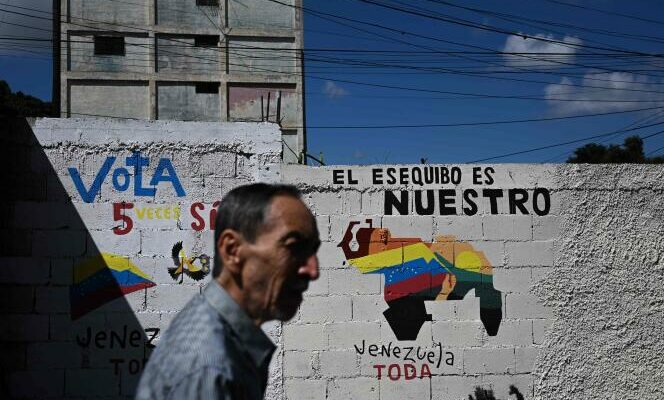On world maps, the western region of Guyana is called Essequibo, Esequibo or Guayana Esequiba. In Venezuelan school textbooks, it is chopped in red and marked with the indication “complaint area”. Two centuries old, the border dispute between Venezuela and its eastern neighbor was almost forgotten before the president, Nicolas Maduro, promised his fellow citizens “reconquer” the Essequibo. The tone has been rising for months between Caracas and Georgetown. On Sunday, December 3, Venezuelan voters will be called upon to decide by referendum on the future of the disputed region.
Through his spokesperson, the Secretary General of the United Nations, Antonio Guterres, said in early November “follow with concern” the situation. “Diplomatic tension has never been so intense between the two countries,” confirms in Caracas the specialist in military issues Rocio San Miguel, according to whom “a military escalation has ultimately become one of the scenarios to consider.”
The Brazilian Ministry of Defense indicated on Wednesday that it “intensified its defensive actions in the northern border region and increased its military presence”. According to the Brazilian press, the army urgently dispatched armored vehicles and troops to the border between the three countries. “Brazil has economic interests in Guyana, reminds Mme San Miguel. But the only possible mediation to reduce the tension between Venezuela and Guyana today is that of President Ignacio Lula da Silva, who enjoys prestige within the left and who has a certain ascendancy over Mr. Maduro. »
“A new emirate”
Essequibo is a territory of 159,500 square kilometers, covered in tropical forest and populated by some 125,000 people. A green underground desert laden with gas and oil, gold, diamonds, copper, bauxite, iron and aluminum. Guyana has less than a million inhabitants and Essequibo represents more than two thirds of its territory. It is the only English-speaking country in South America.
In 2015, the ExxonMobil company discovered a large deposit of crude oil off the coast of Essequibo. The American company prefers to deal with little Guyana than with socialist Venezuela. The territorial dispute resurfaces. It has been on edge since, in August, Guyana launched a call for tenders for the exploitation of several oil blocks in the Essequibo. In October, the discovery of a new oil field brought Guyana’s reserves to nearly 11 billion barrels. Observers mention “a new emirate”. After increasing in 2022 by 57.8% – a world record – the country’s gross domestic product is expected to increase by another 38% this year, according to the International Monetary Fund.
You have 70% of this article left to read. The rest is reserved for subscribers.
